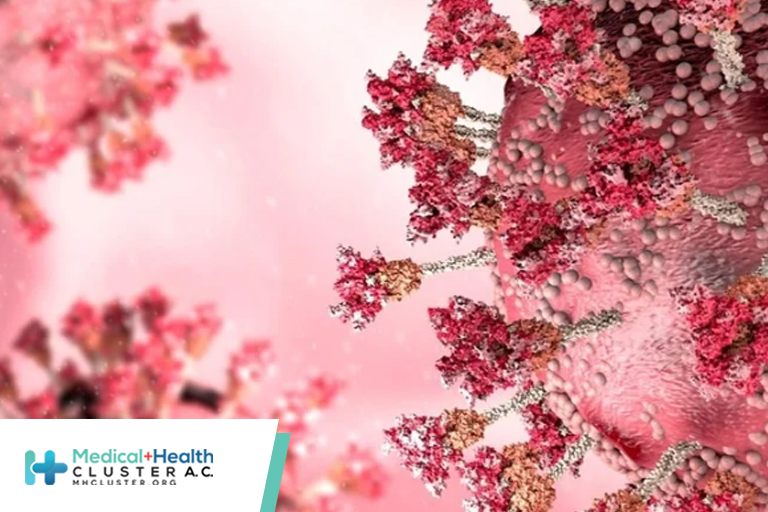En atención a la creciente preocupación sobre la confianza en...
Leer más
Association Between BNT162b2 Vaccination and Long COVID After Infections Not Requiring Hospitalization in Health Care Workers

Survivors of COVID-19 may present with long-lasting symptoms.1 Some factors have been associated with the development of post-COVID conditions (also referred to as “long COVID”),2 including hospitalization.3 A study of older US veterans showed 15% reduction of long COVID after vaccination; however, study limitations included the low number of women and suboptimal vaccination schedules.4
The study was approved by the Humanitas Research Hospital institutional review board. Each participant provided written informed consent.
We conducted an observational cohort study from March 2020 to April 2022 in individuals working in 9 Italian health care facilities.5,6 Polymerase chain reaction (PCR) tests for SARS-CoV-2 were conducted every week (in COVID wards) or 2 weeks (in other wards) for hospital personnel, or if they developed symptoms or were exposed to cases. All health care workers were required to receive 3 doses of vaccine (BNT162b2), with the first and second doses administered in January-February 2021 and the booster dose in November-December 2021.
Between February and April 2022, each participant completed a survey including demographics, comorbidities, a list of SARS-CoV-2–related symptoms at the time of infection and their duration (survey in the Supplement), and vaccination status. We defined long COVID as reporting at least 1 SARS-CoV-2–related symptom with a duration of more than 4 weeks. Hospitalized individuals were excluded to avoid bias related to severe disease, as were individuals with a date of infection less than 28 days before the survey. We included asymptomatic infections in the acute infection group (they could not have long COVID by definition) to avoid overestimating the prevalence of long COVID. The analysis was restricted to health care workers who were tested every 1 or 2 weeks with complete demographic data and a documented positive result for SARS-CoV-2 between March 2020 and March 2022.
By the date of infection, we divided the patients into 3 groups corresponding to the peaks in our data and circulation of variants of concern in Italy (wave 1, February-September 2020 [wild-type variant]; wave 2, October 2020-July 2021 [Alpha]; and wave 3, August 2021-March 2022 [Delta and Omicron]) (eFigure in the Supplement). A multivariable logistic regression model was used to assess the relationship between long COVID and characteristics, including participant sex, age, SARS-CoV-2 infection, wave, and vaccination status 14 days prior to infection. Time since second vaccination was assessed among vaccinated individuals.
The Clopper-Pearson method was used to calculate 95% CIs and the Mann-Whitney U test or the t test for continuous variables and the χ2-test for categorical variables to calculate P values. The significance threshold was defined as P < .05 (2-sided). Analyses were done in Python, version 3.8.3.
Of 2560 participants, 739 individuals (29%) had COVID-19 (89 asymptomatic), of whom 229 (31.0%; 95% CI, 27.7%-34.5%) had long COVID (Table 1). The prevalence of long COVID varied across the pandemic waves, from 48.1% (95% CI, 39.9%-56.2%) in wave 1 to 35.9% (95% CI, 30.5%-41.6%) in wave 2 to 16.5% (95% CI, 12.4%-21.4%) in wave 3. The number of vaccine doses was associated with lower long COVID prevalence: 41.8% (95% CI, 37.0%-46.7%) in unvaccinated patients, 30.0% (95% CI, 6.7%-65.2%) with 1 dose, 17.4% (95% CI, 7.8%-31.4%) with 2 doses, and 16.0% (95% CI, 11.8%-21.0%) with 3 doses. Older age, higher body mass index, allergies, and obstructive lung disease were associated with long COVID.
With a reference group of unvaccinated females in wave 1 with no allergies or comorbidities (Table 2), male sex (odds ratio [OR], 0.65; 95% CI, 0.44-0.98, P = .04), 2 vaccine doses (OR, 0.25; 95% CI, 0.07-0.87, P = .03), and 3 vaccine doses (OR, 0.16; 95% CI, 0.03-0.84, P = .03) were associated with a lower probability of long COVID. Older age (OR, 1.23; 95% CI, 1.01-1.49, P = .04), allergies (OR, 1.50; 95% CI, 1.06-2.11, P = .02), and an increasing number of comorbidities (OR, 1.32; 95% CI, 1.04-1.68, P = .03) were associated with a higher probability. No statistically significant association with infection wave was found. Among vaccinated individuals (n = 265), time between the second vaccination dose and infection was not associated with long COVID (OR, 0.66; 95% CI, 0.34-1.29).
In this longitudinal observational study conducted among health care workers with SARS-CoV-2 infections not requiring hospitalization, 2 or 3 doses of vaccine, compared with no vaccination, were associated with lower long COVID prevalence. Study limitations include that symptoms and duration were self-reported, and causality cannot be inferred.
Créditos: Comité científico Covid




